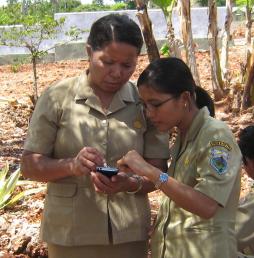The SME sector has an important role to play in the present and future economic development, poverty reduction and employment creation in developing economies (Hallberg, 2000). Stern (2002) stresses that the SME sector is the sector in which most of the world's poor people work. SME sector growth largely exceeds the average economic growth of national economies in many countries and contributes significantly to employment creation. Accordingly, governments and donors alike have recognised the important role of the SME sector for overall development. As a result, many government policies are geared towards supporting their growth through a variety of programmes that range from tax incentives to technical assistance; from regulatory provisions to policy interventions; training and other types of business development services (O'Shea & Stevens, 1998).
Arising from this, one of the key issues is to identify the current information practices and needs, as well as the obstacles that SMEs face in their daily business activities, and to provide guidance in creating relevant policy initiatives that will lead to more economic growth and employment. The SME e-Access and Usage survey was carried out by the Research ICT Africa! (RIA!) network in 14 African countries between the last quarter of 2005 and the first quarter of 2006. Its primary objective is to understand the impact of ICTs on private sector development, and how ICTs can contribute to a vibrant SME sector and economic growth in the context of developing economies.
The countries covered included Botswana, Cameroon, Ethiopia, Ghana, Kenya, Mozambique, Namibia, Nigeria, Rwanda, South Africa, Tanzania, Uganda, Zambia and Zimbabwe. To this end, the SME e-Access and Usage survey was motivated by the lack of clarity about the impact of ICTs on small businesses. The literature to date has failed to create a tight link between the use of ICTs and issues such as profitability and labour productivity. There are so many competing claims against government resources and time that a vague link between ICTs and economic growth and employment creation is not convincing enough evidence for governments to commit their resources. This survey aims to change that perception by providing solid empirical evidence of the link between ICTs and business performance based on firm-level evidence.
A major contribution of this survey to the existing understanding of SMEs in Africa is its use of a formality index to categorise SMEs. Past studies have treated formal, semi-formal and informal businesses uniformly, reducing the applicability of their analysis. A formal business is fundamentally different from an informal business in Africa. A formal business pays its taxes, is more likely to export and often is included in official census of SMEs. In contrast, the primary survival strategy of an informal business is to remain below the radar screen, not to pay taxes and not to form part of any official data. Apart from the obvious survey difficulties this presents, there is a more mundane business difference: informal businesses are also more likely to sell or produce anything that might make money, in contrast to more formal businesses that have a tendency to concentrate on a single product or set of products. The implication of this is that a Cobb-Douglas production function, for example, cannot be used to analyse SMEs, unless there is a declared interest only in formal SMEs.
Of course, suveying only formal businesses would be telling half the story since about two-third of non-resource-driven GDP generation is derived from SMEs, and a large share of that from informal ones. The establishment of the link between ICTs and profitability and labour productivity creates another set of policy imperatives for governments across the continent. ICTs are only useful if they can easily be acquired and used. The key obstacle identified by SMEs towards greater possession and use of ICTs is their cost. The high cost of ICTs in Africa has been attributed to policy choices that have limited competition, and the absence of regulatory capacity to regulate abuse of market dominance in wholesale and retail pricing (Gillwald, 2005 and Gillwald & Esselaar, 2004). This requires greater regulatory capacity, something that is missing from nearly all countries included in the survey. To illustrate this, most governments are exclusively focused on the direct contribution of ICTs towards the economy in terms of profits and staff complements of major telecommunications operators.
However, as this report makes clear, it is the indirect contribution of ICTs towards economic growth that is truly transformative: “ICTs have the largest beneficial impact in conjunction with other changes, including a new set of ICT skills/training, structural changes within business models and the economy, and institutional and regulatory adjustments” (ITU, 2006: 39). This means that ICTs have to be looked at from a perspective that considers all causes of economic growth and attempts to provide a catalytic environment that uses ICTs to generate economic growth rather than the ICT sector's specific contribution towards GDP.

